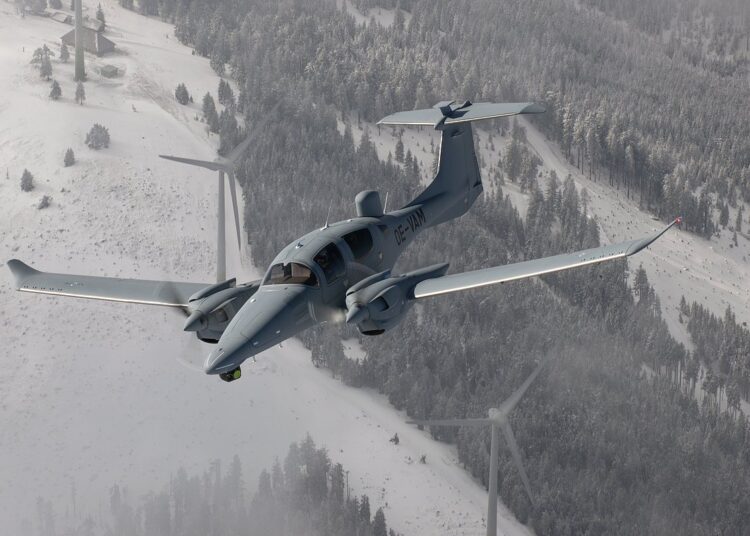After careful consideration, Nigeria has signed contracts for ISR aircraft and UAVs. The Air Force has selected Beechcraft King air 360i and Da-62 for its ISR requirements.
Further confirmation that Nigeria awaits the delivery of several aircraft was made at the last Independence Day celebrations held on Saturday, 1 October where it was announced that two Beechcraft King air 360I, three Da-62 ISR, 12 Bell AH-1Z Viper, and 24 Leonardo M-346 light combat aircraft.
The value of the deal for the two beechcraft is N10,860,000,000 ($24,794,520.30), which includes spares and ground support equipment, but its completion timeframe were undisclosed. Nevertheless, the Beechcraft King air 360I, Diamond Da-62 ISR, and other ISR platforms will support national forces’ missions in the West African region.
The two Beechcraft King Air 360I were acquired as attrition for two Beechcraft King Air B350 that crashed last year. One aircraft (NAF 201) crashed on Sunday 21 February, 2021 while returning to the Nnamdi Azikiwe International, Abuja from Minna Airport after reporting engine failure. A second crashed on Friday 22 May, 2021 on during an official visit to the northern state of Kaduna, killing Nigeria’s army chief, Lieutenant General Ibrahim Attahiru.
Diamond Da-62 ISR aircraft
The DA62 MPP (multi-purpose platform) is a new special mission aircraft developed by Diamond Aircraft Industries, and based on the DA62 twin-engine light aircraft, the DA62 MPP was unveiled at the 2017 Paris Air Show.
The aircraft can carry out several missions such as ISR, law enforcement, search-and-rescue (SAR), land and coastal surveillance, disaster management, infrastructure and environmental monitoring missions.

The DA62 MPP has been specially designed for carrying multi-functional aerial sensors, like EO/IR cameras, land and sea radars, COMINT solutions, airborne laser scanners or large format digital aerial cameras, and more.
The aircraft nose is fitted with an electro-optical (EO)/infrared (IR) turrets with a maximum weight of up to 100kg. The under-fuselage can support the carriage of payloads of up to 50kg for maritime or land radar applications. The aircraft also integrates a newly designed satellite communication (SATCOM) pod carrying L, Ku and Ka-band antennae.
The aircraft is also equipped with an operator station with consoles for one or two operators to control and monitor the sensors on-board. The DA62MPP is also offered with special mission turnkey solutions.
The turnkey solutions include a fixed-wing remote sensing platform, airborne sensors, data-links, and land-based stations. The operators are also provided with global support, spares, tooling, transport and associated pilot, and operator and maintenance training.
Beechcraft King Air 360I
Likewise, Textron Aviation’s Beechcraft (formerly Raytheon) King Air 350i is a popular basis for ISR and intelligence, surveillance, target acquisition, and reconnaissance (ISTAR) conversions.
Once seen as a budget alternative to larger ISR aircraft, light ISR aircraft like the King Air have found a niche complementing unmanned air vehicles (UAVs), and offering greater situational awareness on-scene. The aircraft will be equipped with both radar and EO/IR sensors, as well as comprehensive defensive aids.
The King Air 360I can be fitted with a variety of payloads such as a moving target indicator, synthetic aperture radar, EO/IR (FLIR), streaming video datalink, self-protection systems, and a wide variety of high-performance communications systems.
The mission equipment for Nigeria’s version may likely includes a belly-mounted Selex Seaspray 7500E active electronically scanned array (AESA) radar, an L3 WESCAM AN/AAQ-35 EO/IR turret – better known as the MX-15HDi.
Both ISR aircraft will join two ATR 42 maritime patrol aircraft, two Cessna Citation CJ3, one other Diamond DA42, and two Super King Air in providing comprehensive aerial surveillance and maritime patrol capabilities to the Nigerian Air Force.
They add to the NAF’s ability to keep its Intelligence, Surveillance and Reconnaissance (ISR) assets in a persistent deployment mode; whereby multiple ISR platforms are deployed to the forward edge of the battlespace for a longer period of time. These approach offers the benefits of a reduced engagement time; since the time required from target detection to engagement is significantly reduced.





